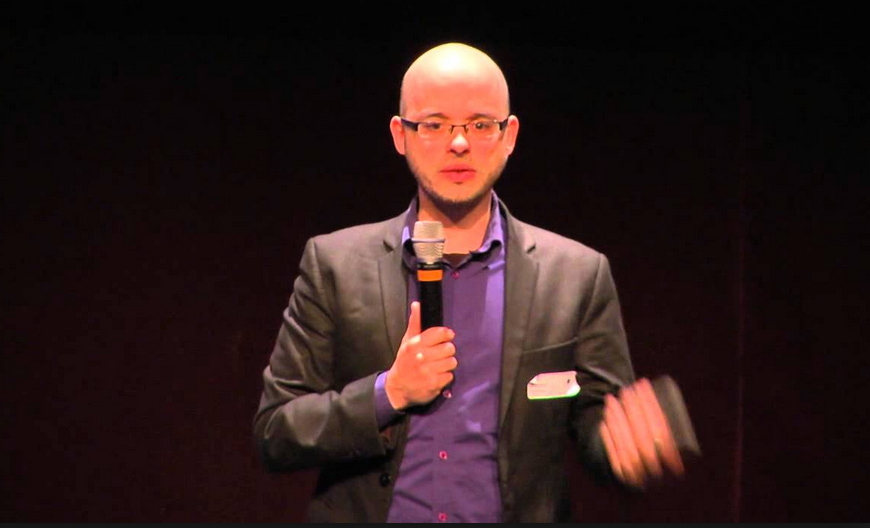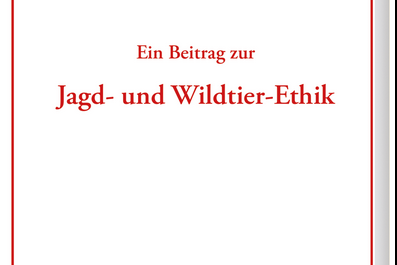This year, I attended animal rights (!) conferences in Luxembourg and Warsaw. While there were lots if interesting debates as well, I came across quite a strong and essentially unchallenged movement, which I would like to call “anti-life”. They call themselves “wild animal suffering” interventionalists. Their first approach seems quite harmless. They say, imagine you see an injured wild animal, like a bird with broken wings. Wouldn’t you help? Sure I would. An injured being in need you come across, you would normally help, if you are an empathic person.
Well, if you agree to that, here comes the next step: there is a wild fire and koala bears are sitting on the trees, unable to escape. Would you help? Sure I would. If we realize there is a forest burning, normally we try to extinguish the flames. Equally, if there is flooding.
But now comes the sinister twist: The above, the anti lifers say, proves that wild animals need “our” help. So we need to go there, control the wild, and “help”. I.e. we should provide all wild animals with food and shelter, defend them against predation and save them generally from anything that might happen to them. We should, the anti lifers explicitly say, stop natural selection as one of the greatest evils (in the sense of producing the most negative consequences) and stop the natural balance of all ecosystems. In order to avoid overpopulations, humans should prevent offspring and stop predation altogether, ideally by genetically manipulating predators, or possibly (humanely!) exterminating them. In essence, humans should design nature from scratch, so that there is the least amount of wild animal suffering possible.
But it goes further. There are, the anti lifers say, some animal species that cause real harm and no happiness. One of those species is (not humans but) screwworms. Hence, screwworms should be eradicated from the Earth. And other harming species should follow. But even further, the anti lifers claim that wild animal suffering outnumbers the suffering of farmed animals by far. Which means, we should primarily invest time and energy into nature design and wild animal suffering prevention. And that in turn means, putting concrete over a wild meadow, because in this meadow animals live and suffer, while on concrete there are no animals left so no-one suffers. Hence the name “anti lifers”. Yes, in one talk at the conference in Warsaw the lecturer seriously claimed that we need to (mostly?) eradicate wildlife altogether, because the human species in all likelihood will not exist for millenia, and when humans are gone, then there is nobody saving wild animals. So before humans die out, wild animals should cease to exist.
The essential philosophical backbone of the anti life movement is a radical utilitarian consequentialism with its view that ethics solely means reducing suffering and furthering happiness. There are no rights, justice does not matter. All that matters is, if you do something, does that increase or decrease suffering in the world, if the former then leave it, if the latter then do it. With this approach comes a judgement called net positive or net negative lives. A life is net positive if it has more happiness than suffering, its net negative if there is more suffering than happiness. Net positive lives must be promoted, net negative lives must be (humanely!) ended. For example if people keep farmed animals in a net positive way, then we should promote eating them, because that means more net positive lives are on the planet. Net negative lives – and the anti lifers seriously believe that most wild animals have net negative lives – should be ended. They also clearly say that hunting by humans is more humane than hunting by nonhumans, and so better humans hunt animals than to allow predation to proceed.
What is really shocking to me is that the anti lifers at this point sound more like the usual animal exploiters. Farmers love to claim that wild animals suffer only and the farmed animals, even in intensive conditions, have it much better, they are well-fed, warm, secure. And hunters keep claiming that wild animals therefore must be fed and that their surplus must be shot, rather than allowing big predators to exist. And they agree with the anti lifers, who say that veganism is not worth the effort, because veganism does not change wild animal suffering, which supposedly is by far the most suffering on the planet, everything else pales to insignificance. Listen to how farmers and hunters argue against the presence of the wolf and you see that they are indistinguishable from the anti lifers.
It seems to me that the anti life movement must be challenged on all fronts. It is clearly set against the animal rights movement, which wants to achieve basic rights for animals that protect them from net negative or net positive calculations. Even members of a species that causes suffering have an inalienable right to life. And the ultimate goal of the animals rights movement is animal liberation from human domination. Its all about ending human colonialism of the animal world. That means a multi species society like in sanctuaries for domestic animals and a wilderness, where animals can live free and undisturbed by human incursion. I have argued elsewhere how detrimental utilitarianism and consequentialism are to ethics altogether, and how counterintuitiv. Reducing suffering is not the same as liberation. All human liberation movements never argued that they are about reducing suffering. They were and are about self determination, i.e. autonomy. I see no reason why that should be different for nonhuman animals.
But what strikes me again and again when I listen to anti lifers is that they honestly seem to think there is (almost) nothing worse than living in the wild. And that I consider so weird because I have spent (according to my diaries on wilderness excursions) 4.800 days in the wild so far in my life. And wherever and whenever you see animals in the wild, they seem very happy and content and “in their element”, so to speak. Indeed, an ethologist told anti lifers at the conference, when they were ranting on about wild animal suffering, that if he is giving them a camera saying that they have 1 week to try and film wild animal suffering, they will most likely not succeed. You just almost never see that. So why do anti lifers have the opposite impression? Firstly, I think because if you see wildlife documentaries, you often see predation or suffering of some kind. Well, that is because the film makers want to show action. So they are waiting months to see an animal fight or being preyed upon, and then cut the film such that you could think that is the norm. But I feel that the problem starts before that. I imagine an anti lifer sitting on his sofa in his well heated house, eating food from the fridge and looking through his double glazing window out seeing an animal in the rain. And they feel pity. They think what a poor creature. Can’t have central heating, can’t have a soft sofa, can’t have food from the fridge. The poor thing must suffer on end, every minute of the day. I call this the civilisation bias. It is the view from a person, who has grown up in civilisation, who knows no different, who considers the civilized luxury essential and who can’t imagine that not everyone would want to live like that.
Well, that is completely wrong. It starts with me. I deliberately leave civilisation often to expose myself to the wild. And I take the risks the wild poses. And I do not want somebody controlling what I do and intervening if they feel I suffer, which I don’t.
I now want to propose 6 conjectures:
- Animals in the wild suffer less than humans in civilisation, i.e. they are healthier, happier and less stressed. I base that on the fact, that 27 % of humans need anti-depressants in their lives according to statistics from UK (source: New Scientist), that 500.000 humans suffer from depression each year in Austria (statistics from infoscreens in the Vienna underground) and that suicide is a major cause of death. Parents need to work to sustain their kids, which means young children spend 8 hours a day in childcare instead of in their family. Average humans work on mundane things 8 hours a day, which explains the epimedic of burn out we see these days. And when there are holidays, people go into nature to do what wild animals do all their lives. Humans in civilisation are ill for 16 years on average (statistics from New Scientist). Wild animals are almost never ill, because they are healthier due to natural selection and they have much less contact to pathogens in the wild. An example is the snow hare. This animal has a very tough life, you would imagine, being always out in the open, come rain or snow, even in the harshest winter high up in the mountains. But two studies have shown that snow hares are much less stressed than humans in civilisation and are much healthier (source: the book “Der Schneehase in den Alpen” by Maik Renus).
- Humankind is the species of animals on this planet that causes by far the most amount of animal suffering (and not the screwworm). Even vegan humans do. That starts with pest control in the cities and inadvertent bird killing due to energy production and glass windows, and does not end with agricultural collateral animal killings, car accidents and subsidies for slaughter houses and factory farms.
- Most wild animals are happy most of the time, while most farmed animals are suffering most of the time. That is the case because wild animals are adapted to their environment, so they can cope. And being able to cope and solve problems makes you happy. And happier animals procreate more, since they suffer less stress, so the happier animals are selected for. On the other hand, nothing in evolution has prepared farmed animals for concrete slatted flooring, close confinement, no sun, no fresh air, and permanent pathogenic pressure.
- Wilderness without human influence has the least amount of suffering per animal in comparison to all other existing ecosystems with more or less human influence.
- (Almost) all humans, who have grown up in the wild, do not want to join civilisation and actually abhorr it. There are many examples for that, like Derzu Usala or Agafja Lukowa, but equally the North American Prairie tribes, who resisted being put into schools and reservations.
- (Almost) all indigenous wild living human tribes do not want to become civilized or even be helped by civilisation. One example are the humans on the island of North Sentinel, who kill people from the outside approaching, even if they came to help after a tsunami. And Brazil has forbidden to contact tribes in the Amazon, in order to save and protect them.
I think for all those 6 conjectures I could make a well argued case. And if they are true, most of the assertions by the anti lifers go out of the window, even if they still insist on considering reducing suffering as the all important ethical goal.
Let me make one comparison at the end. I saw my brother die of pancreatic cancer. He died absolutely horribly, and over an extended period of time. And then consider a lynx killing a deer. The lynx sneaks up to the deer and then jumps on him/her. In no time, the lynx bites the deer in the throat and thereby stops him/her breathing. The deer dies in a very short time without any blood loss, since the incisors are only keeping the molars in place to enable the squeezing of the windpipe. While this is happening, the deer is in shock and does not experience pain. Now look at a human hunter. In the best of cases, you can read that up in hunting literature, they hit the animal with their bullet in the chest. When getting into the body, the tissue resists the bullet and the bullet starts twisting, doing damage to the internal organs by widening its pathway. When it leaves the body on the other side there is a big hole, part of the intestines fall out and there is a lot of blood loss. The animal will jump up and run a few steps and then collapse and slowly die by bleeding to death. Now, which of those three scenarios means least suffering? Remarkably, the wild animal scenario.




Ein Gedanke zu “The anti-life movement”